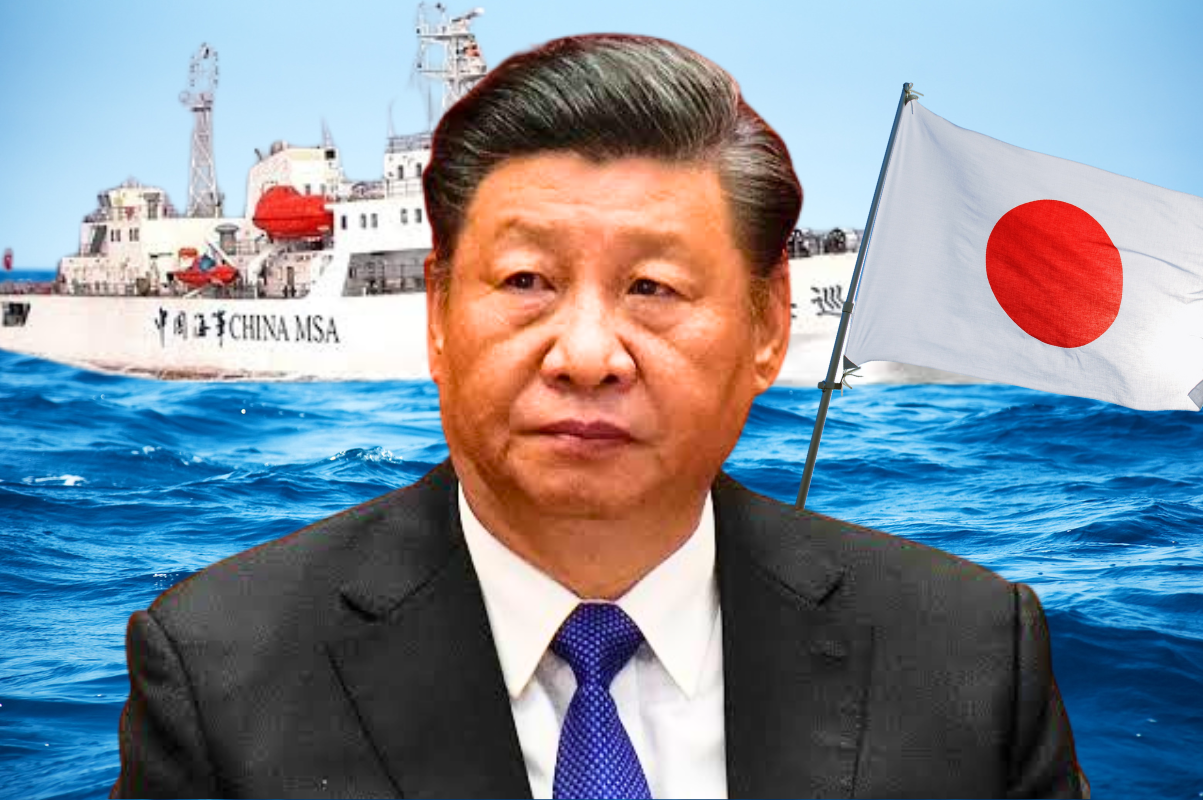China Sends Patrol Ships Near Japan – What It Means for Asia-Pacific Security
China Sends Patrol Ships Near Japan, reigniting security concerns in the Asia-Pacific region. On June 25, 2025, Chinese Coast Guard vessels were spotted near the disputed Senkaku Islands, known in China as Diaoyu. This development aligns with Beijing’s increased maritime activity and suggests deeper strategic intentions. As international stakeholders and regional powers closely monitor these actions, many are unsure of their implications for Asia-Pacific security.
Tokyo has criticised the frequency and timing of Chinese patrol ships, despite their long-standing presence in the area of Japanese waters. It occurs at the same time as broader geopolitical tensions between Taiwan and the South China Sea, as well as an increased American military presence in the Indo-Pacific.
China Sends Patrol Ships Near Japan: A Deliberate Signal
Early on Tuesday morning, two Chinese Coast Guard vessels entered Japanese territorial waters near the Senkaku Islands, according to Japan’s Ministry of Defence. In response, Japan dispatched coast guard units and lodged a formal diplomatic protest through the Foreign Ministry.
Beijing’s continued claim to the disputed islands is emphasised by this action, which also reflects a larger maritime assertiveness that has characterised Chinese foreign policy under President Xi Jinping. According to The Japan Times, this most recent intrusion is the 20th in 2025 alone, pointing to a calculated strategy of “grey zone” operations—actions that don’t involve war but aim to upend established territorial arrangements.
Implications for Japan-China Relations
China’s deployment of patrol ships close to Japan is a test of diplomatic fortitude as much as a maritime one. China has been repeatedly urged by Japan to “restrain provocations” and adhere to international maritime laws. Chinese officials respond by denouncing Tokyo’s “unilateral claims” and accusing Japan of “illegal occupation.”
Particularly as both countries update their naval capabilities, these exchanges show a wider decline in Japan-China relations. China is the “greatest strategic challenge” to the rules-based international order in East Asia, according to Japan’s new national defence strategy, which was unveiled in late 2024.
Asia-Pacific Security at a Crossroads
Regional security analysts are becoming increasingly concerned about China’s increasingly frequent deployment of patrol ships close to Japan. Experts caution that even small errors in judgement in disputed waters have the potential to turn into major war. The Asia-Pacific area is about to enter a phase of “strategic unpredictability” unprecedented since the Cold War, according to Reuters.
The U.S. Pacific Command has reaffirmed its support for Japan under the terms of the U.S.-Japan Mutual Security Treaty and voiced “deep concern” over China’s actions. Concern over the growing militarisation of regional waters has also been expressed by Australia and the Philippines.
Japan has reacted with equal vigour. Japan “will not tolerate any attempts to unilaterally alter the status quo by force,” Prime Minister Fumio Kishida said, reiterating views that have grown more prevalent among regional democracies.
China condemns US Attack on Iran ‘Seriously Violates’ International Law.
Strategic Context: Taiwan, the East China Sea, and Beyond
It is also necessary to consider the larger strategic context when evaluating China’s decision to station patrol ships close to Japan. The East China Sea turns into a stage for power projection and deterrence as tensions over Taiwan continue to escalate and Beijing is under diplomatic pressure over its claims in the South China Sea.
The Diplomat’s analysts contend that Beijing is obfuscating the distinction between military aggression and civilian enforcement by utilising its coast guard and maritime militia as instruments of “lawfare.” It is more difficult for other countries to react without escalating when China uses this tactic to establish dominance without engaging in direct military conflict.Additionally, these maneuvers serve domestic purposes. Nationalist sentiment in China is tightly linked to sovereignty claims, and visible patrols help Beijing demonstrate control and resolve to its domestic audience.
Conclusion
The delicate balance of peace in the Asia-Pacific region is being further strained as China increasingly places patrol ships close to Japan. The situation is still unstable even though neither side has yet to engage in direct combat. Particularly as American and allied forces expand their presence in the area, there is a significant chance of unintentional escalation.
This most recent event emphasises the necessity of strong diplomatic frameworks, steps to boost confidence, and increased multilateral communication. The stability of the Asia-Pacific region may further deteriorate in the absence of a common framework for handling maritime disputes.
The world will be watching not only where Chinese patrol ships go next, but also how regional powers react in the upcoming months.






